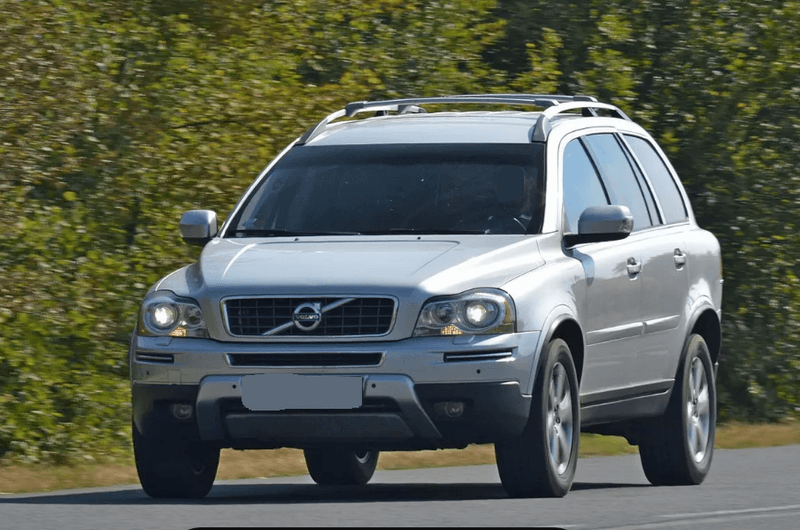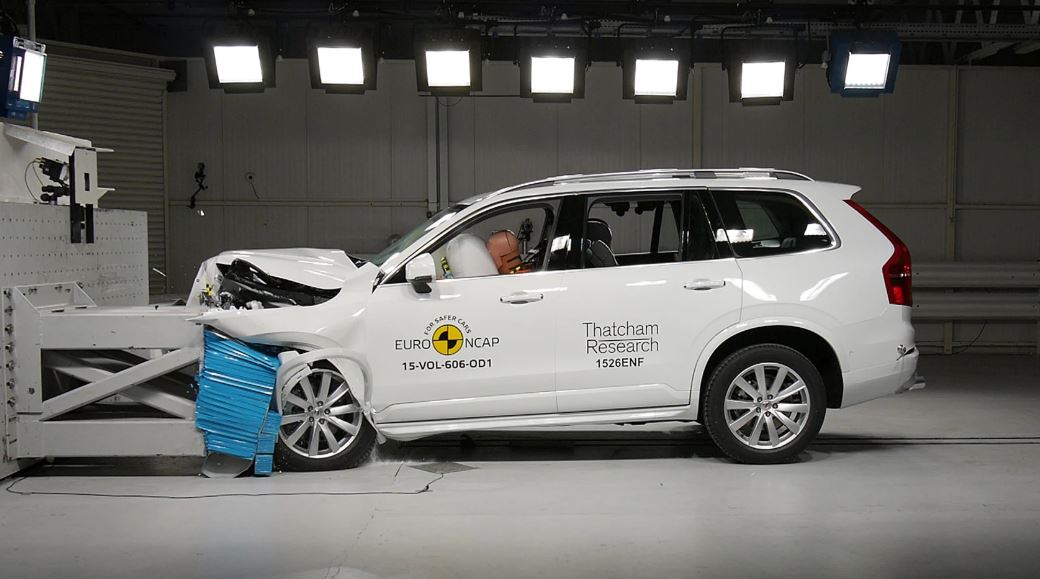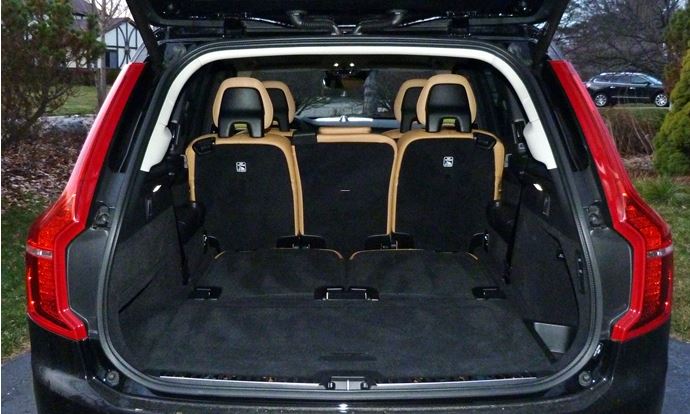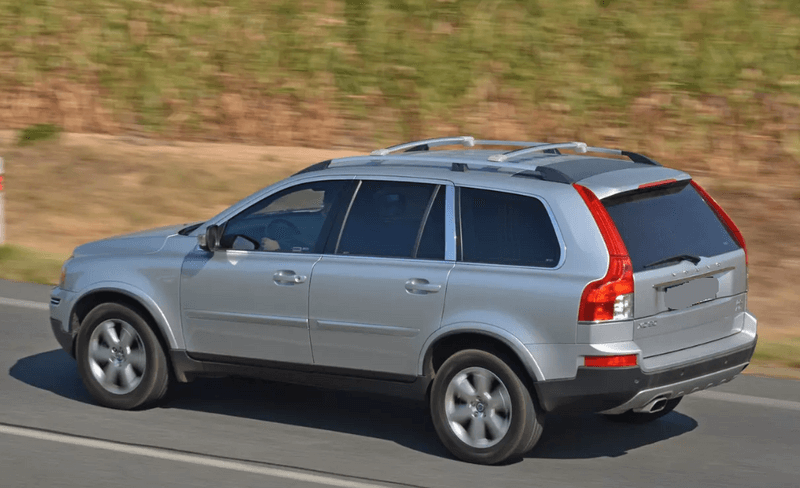The first generation XC 90 luxury SUV was introduced in 2002. The second generation went on sale in 2012. China liked the first generation so much that it remained on sale in the local market until 2017. It's a family tank with up to seven seats that has sold 640,000 units.
The XC90 battled for customers with similarly rugged cars - the BMW X5, Mercedes-Benz G and Audi Q7. Compared to the German cock-up, Volvo's model was cheaper, had more equipment, even cheaper servicing. Competitors offered a more dynamic ride and nicer interiors.
Volvo - safety first
The XC90, with any engine, will run on more than 10 litres per 100km. In corners, like all SUVs, the XC90 leans because of its high centre of gravity. So why do customers buy a car for at least 1.5 million that eats a lot and drives mediocrely? Recall that in 2002 you could buy a nice apartment for that amount.
The design is reminiscent of a bloated V70 wagon on stilts. It's a safe but thirsty two-tonne tank. The Volvo's main attraction for buyers is its spaciousness and, above all, its safety. Volvo traditionally offers a higher degree of occupant protection than other car companies. We'd rather not know how a collision between a two-ton XC90, which has a boron-steel-reinforced passenger compartment, and an ordinary hatchback would turn out.
The XC 90 also has the ROPS rollover protection system. Well, even the carmaker itself was aware of the disadvantages of the SUV body. The model passed NCAP tests in 2003 and earned a full five stars for occupant protection.
To quote from the official NCAP exit report, the Volvo XC90 has an incredibly strong body that provides total protection for the occupants. During the test, we found that the car suffered minimal deformation and intrusion into the cabin area.
A practical SUV
The boot has a basic volume of 613 litres. If a third row of seats is installed, the trunk can hold 249 liters.
If two rows of seats are folded down, the volume is 1,837 litres.
The exterior design of the car is still handsome and timeless. The XC 90's design is so hilarious that its rear end was used in the design of the younger V50. But the same can't be said for the interior, which hasn't aged too well. The design is a Nordic spare design full of dark plastics and while it's well made and mechanically durable, it's a slight disappointment in a million-and-a-half dollar car. The seats are traditionally excellent in a Volvo. The sound system is superb. To sum it up, Volvo has focused on ergonomics and value materials and left out the unnecessary decorative nonsense. Some versions have a third row of seats. While it's suitable for passengers up to 170 centimetres tall, you definitely want this trim because you'll sell the car better later.
Rather thirsty motorizations
● From the start of production, a 2.5T petrol five-cylinder (154 kW and 320 N.m) and a T6 2.9-litre six-cylinder (200 kW and 380 N.m) were offered.
● Much more popular (in Europe), however, was the diesel five-cylinder 2.4 l in the D5 version (120 kW and 340 N.m.) This five-cylinder was successively modified to offer outputs of 136 and 147 kW.
● The turbocharged 2.5T (five-cylinder) and 3.2 six-cylinder petrol engines were replaced by a 3.2 litre in-line six-cylinder, with outputs of 175 kW and 179 kW
● The rarest engine is the 4.4 forked eight-cylinder providing 232 kW, developed for Volvo by Yamaha. The engine was installed transversely to fit under the car's bonnet. The engineers tried to reduce its size by using an unusual cylinder arrangement - usually the cylinders of a forked V8 have a 90-degree angle between them. Yamaha offered an engine in which the individual cylinders are at a 60-degree angle, which means it takes up less space, but the engine lost one of the main advantages of the V8 - velvety running. Therefore, it was necessary to install a balancer shaft. Less than a tenth of XC90 sales in our market were petrol engine versions. The consumption of the eight-cylinder is 14 litres or more.
Which engine to choose for the XC90?
None of the motorisations are known for their spoilage. Czech motorists clearly prefer the 2.4 diesel five-cylinder.
Petrol engines are not bad in themselves. By definition, they will get worse fuel economy than their diesel counterparts.
We would avoid the supercharged T6 petrol six-cylinder, which is mated to a four-speed automatic from General Motors. This automatic steals power from the engine, and its four-speed design unnecessarily drives the engine into high revs, which contributes to fuel consumption. This motorisation is also tricky on engine oil changes.
Of the petrol engines, the best choice is the 3.2 in-line atmospheric six-cylinder. Its only blemish is consumption, which starts at 11 litres of petrol.
What about Yamaha's V8? It requires engine oil changes every 10,000km and is prone to overheating. If you can get past these issues, it is clearly the most dynamic powertrain for the XC90.
Conversions to LPG?
It is generally not recommended to rebuild a five-cylinder 2.5T turbo petrol engine.
Is diesel worth it?
The most in-demand engine is the 2.4L five-cylinder diesel. The version for the Euro 3 emission standard did not yet have a particulate filter.
Check the wiring regularly as this is an engine that will stumble if it breaks. It is recommended that the timing belt be checked every 100,000 km.
For diesel engines, you may be surprised to learn that we recommend an automatic. There are no problems with the Geartronic five-speed automatic from Japan's Aisin. Occasionally, the Haldex intermediate clutch will go bad. The driver doesn't even notice the fault until he or she needs to take the car up a hill in winter.
Why you should avoid SUV?
● First and foremost, it's important to remember that a wagon of the same length and size will always get better gas mileage and driveability.
● It's not a pure off-road car.
● Wealthy customers usually buy SUVs for prestige, safety and comfort. Some mention practicality, but that's controversial. MPVs, or MPVs, can make better use of interior space.
● SUVs have higher fuel consumption, worse emissions and run down tyres faster. Driving characteristics are also worse, for example in the moose test, the results are bad because
Today, examples of the XC 90 older than 2010 are around 4000 GBP. In our opinion, combined with the diesel five-cylinder, it's a great used car that won't rust. ¾ of used cars have automatic transmissions and most models have dual-zone climate control.
Autonorma offers auto parts for Volvo cars and heavy equipment. We stock hundreds of parts for most makes of cars. Just call or write!
01.09.2022
5 min
Roland




